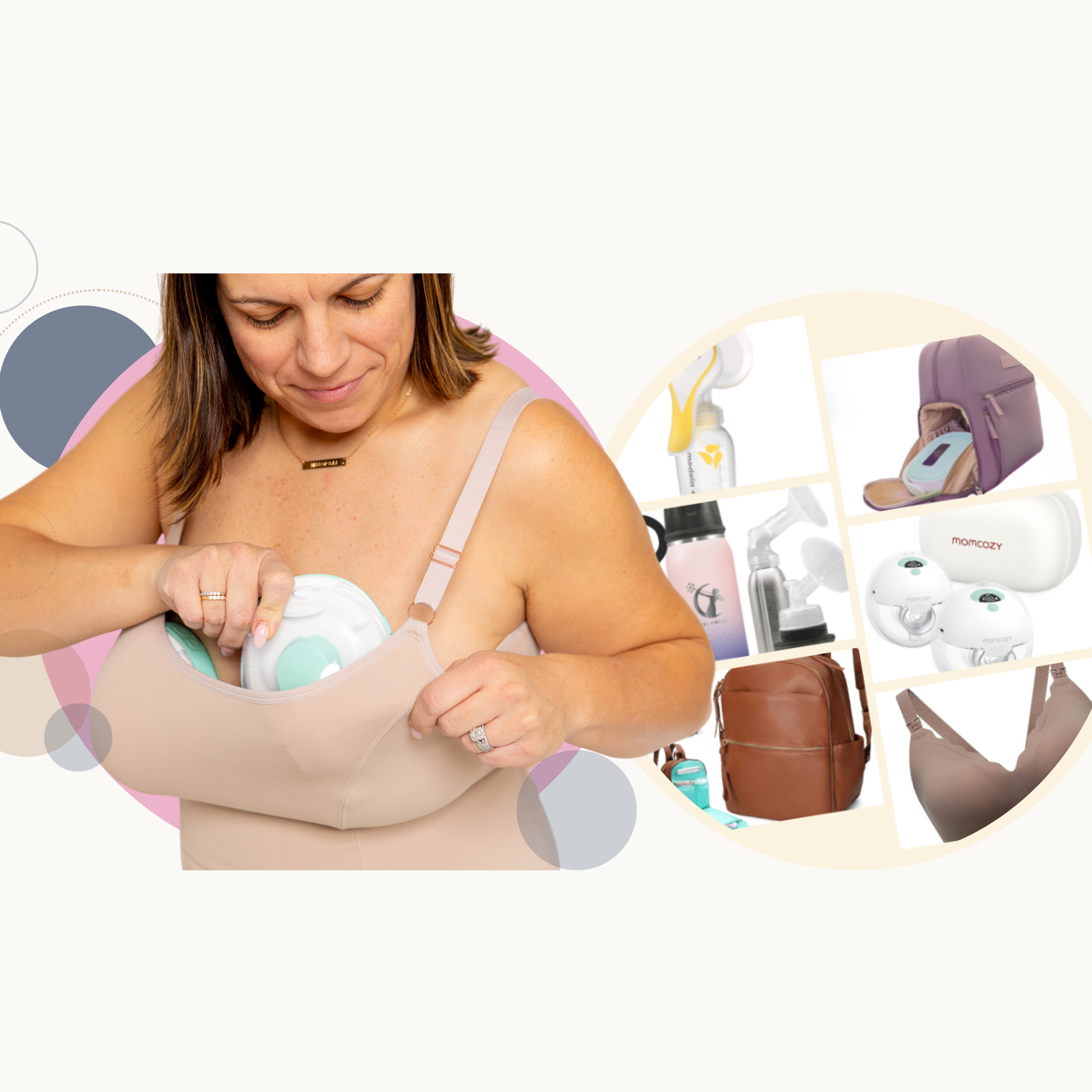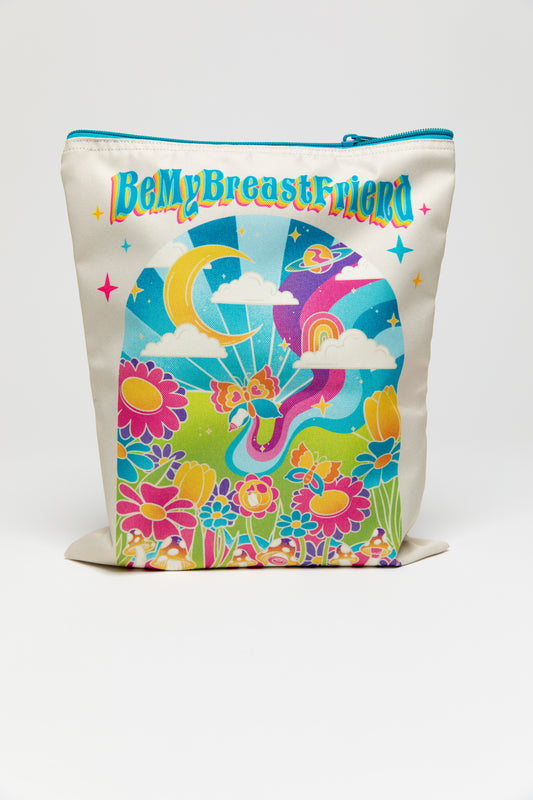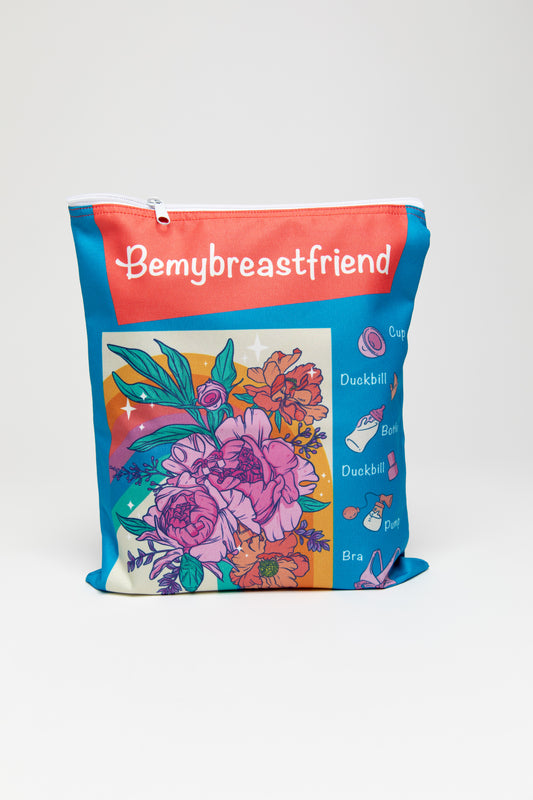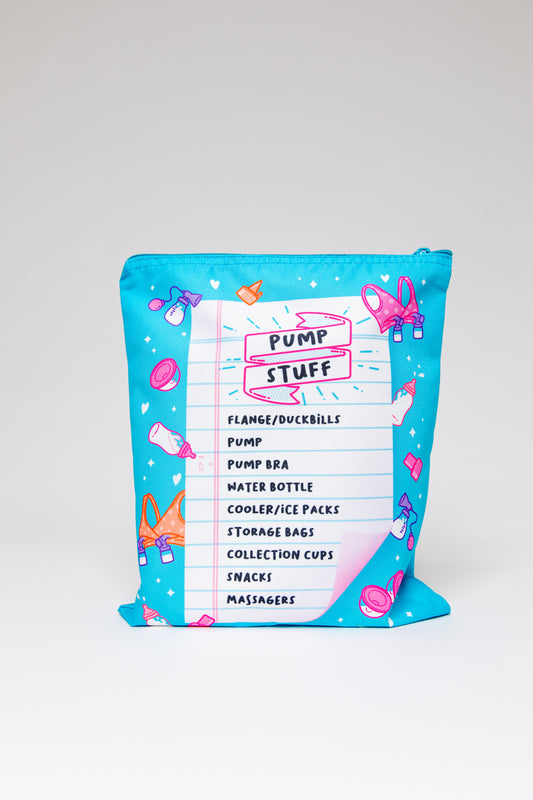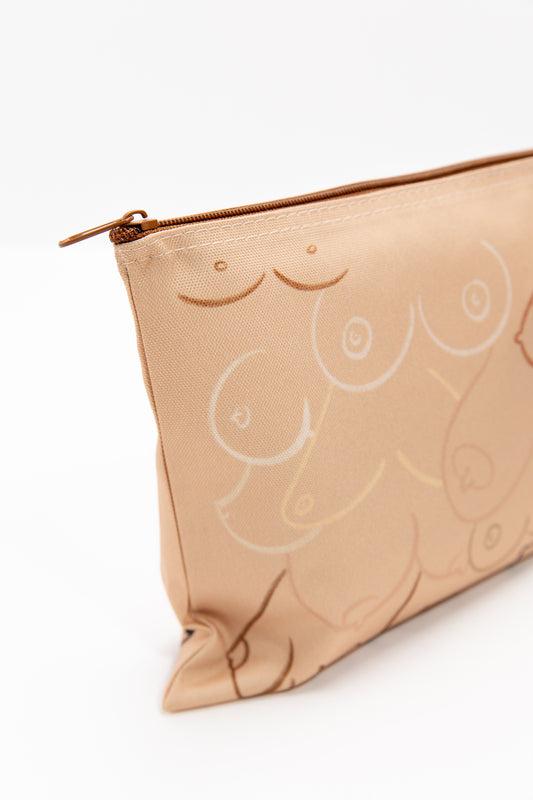
Because there’s already enough you’re not prepared for.
Let’s talk about the thing that sneaks up on so many of us postpartum: the return of your period.
Whether it’s six weeks or sixteen months after birth, getting your period again can feel like a surprise party you didn’t want to attend. One minute you’re just leaking breast milk and surviving on coffee, the next you’re Googling “Can I use a menstrual cup while breastfeeding?” at 2 a.m.
Let’s break down what to expect, how to know when your cycle might be coming back, how it can impact milk supply, and how to navigate this next chapter of postpartum — with a little less confusion and a lot more confidence.
What is LAM and Does It Mean I’m Period-Free?
LAM stands for lactational amenorrhea method. For many women, the body naturally suppresses ovulation while breastfeeding. The increase in the hormone prolactin (the hormone that signals milk production) also can delay the return of ovulation. Some mothers rely on this delayed ovulation as a form of natural birth control, also called "lactational amenorrhea method" — I wouldn’t necessarily recommend this method. It’s only reliable under very specific conditions:
- Your baby is under 6 months old
- You haven’t gotten your period yet
-
You’re exclusively breastfeeding
- Your baby is still eating regularly throughout the night
Does LAM work for pumping moms?
If you are an exclusive or occasional pumping mama, like me, LAM won’t reliably delay ovulation. (Everyone is different.)
Yep, this one catches a lot of us off guard: pumping is more routine and not freely feeding baby at the breast on demand through the night. That means even if you’re feeding your baby breast milk around the clock, if they aren’t getting it at the breast, continuously stimulating hormones, therefore not a reliable method to suppress ovulation.
In other words, your trusty pump might not be sending the same “don’t ovulate yet” message to your body. That doesn’t mean pumping is bad — it’s a tool, and a necessary one for many families — but it does mean that if you’re relying on LAM as your form of birth control, exclusively nursing at the breast (combined with the other factors listed above) is a key part of making it work.
Want to maximize LAM’s effectiveness for as long as possible? Here’s what helps:
-
Nurse on demand whenever baby shows feeding cues — day and night
- Offer the breast frequently, not just by the clock
-
Let baby end the feed, rather than timing sessions
- Avoid pacifiers or bottles that could mask baby's hunger cues
- Delay solids until around the midway point of baby’s first year (typically 6 months or later)
These practices help keep the hormonal feedback loop between your baby and your body strong — keeping ovulation at bay a little longer. But of course, everybody is different. Some people get their periods back at 3 months despite exclusive breastfeeding, and some go well over a year without a single drop of blood. (Yes, really.)
Signs Your Period Might Be Coming Back
We all want to know when to expect our periods, but perhaps even more important is knowing when to expect your first postpartum ovulation.
DID YOU KNOW: Ovulation occurs before your period returns.
It’s true! A period is the natural shedding of the uterine lining, which a woman’s body builds up over the course of a menstrual cycle in anticipation of a baby’s implantation. If no baby is conceived during ovulation, the uterine lining will shed — hello, Aunt Flo!
Did you catch that? Ovulation has to occur BEFORE you have a period (yes, even postpartum.)
That means you can potentially get pregnant even if you haven’t seen any bleeding yet. For many women, the first luteal phase (the time between ovulation and the start of menstruation) won't be long enough to support implantation, but there are certainly exceptions. (That's why you sometimes see women having "Irish Twins".)
If you’re hoping to delay another pregnancy — which most OBGYNs recommend for at least a year to give your body time to heal and your baby plenty of nursing time — keeping an eye on ovulation signals is key. By paying attention to your body’s natural signals, it’s possible to delay pregnancy without the use of hormonal birth control.
Signs ovulation (and consequently, your postpartum period) could be near:
1. Changes in cervical mucus
“Fertile cervical mucus” is that familiar egg white consistency— slippery, stretchy, and hard to miss. This typically begins to increase a few days before you ovulate. If you are noticing a sudden increase in fertile looking cervical mucus, you may be getting close to your ovulation time.
2. A positive LH test
You can use ovulation predictor kits (OPKs) to detect a rise in luteinizing hormone (LH), which surges just before ovulation. This can give you a heads up before your period makes its grand entrance. Most women will experience ovulation between 12-48 hours after a positive LH test.
Check out these affordable LH test strips! They are easy to use and compatible with the free Premom app. Just take a picture of your strip each day, and the app will read and score your LH levels, making it easier to track a rise in luteinizing hormone.
3. Mood and Energy Shifts
Some people notice subtle (or not-so-subtle) mood changes, breast tenderness, or fatigue when their hormones start cycling again. These symptoms are often similar to PMS.
4. Cramping
Some women may experience cramping during ovulation. This is typically an ache or pain, often concentrated on one side of the abdomen (over whichever ovary happens to be ovulating that month.) It can last for a few hours or up to 1-2 days.
When Your Cycle Comes Back — and Your Milk Takes a Hit
It’s totally normal for milk supply to dip slightly during your luteal phase (the time after ovulation but before your period). This is due to rising progesterone, which can impact milk-making hormones.
Tips for protecting your supply:
-
Nurse or pump more often during that time if possible
-
Stay hydrated and nourished — electrolyte drinks and protein-rich snacks can help
-
Calcium + magnesium supplements (taken from ovulation to menstruation) can lessen supply dips and even help with PMS symptoms
Don’t panic — this is usually temporary and doesn’t mean your breastfeeding journey is ending. Your body’s adjusting. Give it some grace, and give yourself some snacks.
Menstrual Collection
Your postpartum periods may be a little different than the ones you experienced pre-baby. Many women notice their periods are heavier or last longer. Once your period returns, you may want to rethink your menstrual products — especially if you’re juggling postpartum pelvic floor healing, sensitive skin, or eco-conscious choices.
Personally, I’m not a fan of menstrual cups. They just weren’t comfortable for me. The Hello Disc is my go-to for postpartum periods. If you’ve found tampons uncomfortable after birth or just want something low-maintenance, this could be your new best friend.
Check out this podcast interview I had with Period Nirvana’s Kim Rosas. We discussed everything you need to know about sustainable menstrual collection products.
Final Thoughts: Your Body’s Still Figuring It Out — And That’s Okay
Postpartum is a wild ride of hormonal plot twists. Your period returning can feel like a disruption, a relief, or just one more thing to deal with while trying to keep a baby alive.
When ovulation does finally return postpartum, your experience of BOTH ovulation and your period may be very different what it was pre-baby. Some women experience more (or less) cramping than before. Your periods may be heavier or last longer than before pregnancy. That's all normal! Your body is figuring out a new rhythm after baby.
Listen to your body. Track your symptoms. Ask for help when you need it. And maybe keep a Hello Disk stashed in your diaper bag. Just in case.

